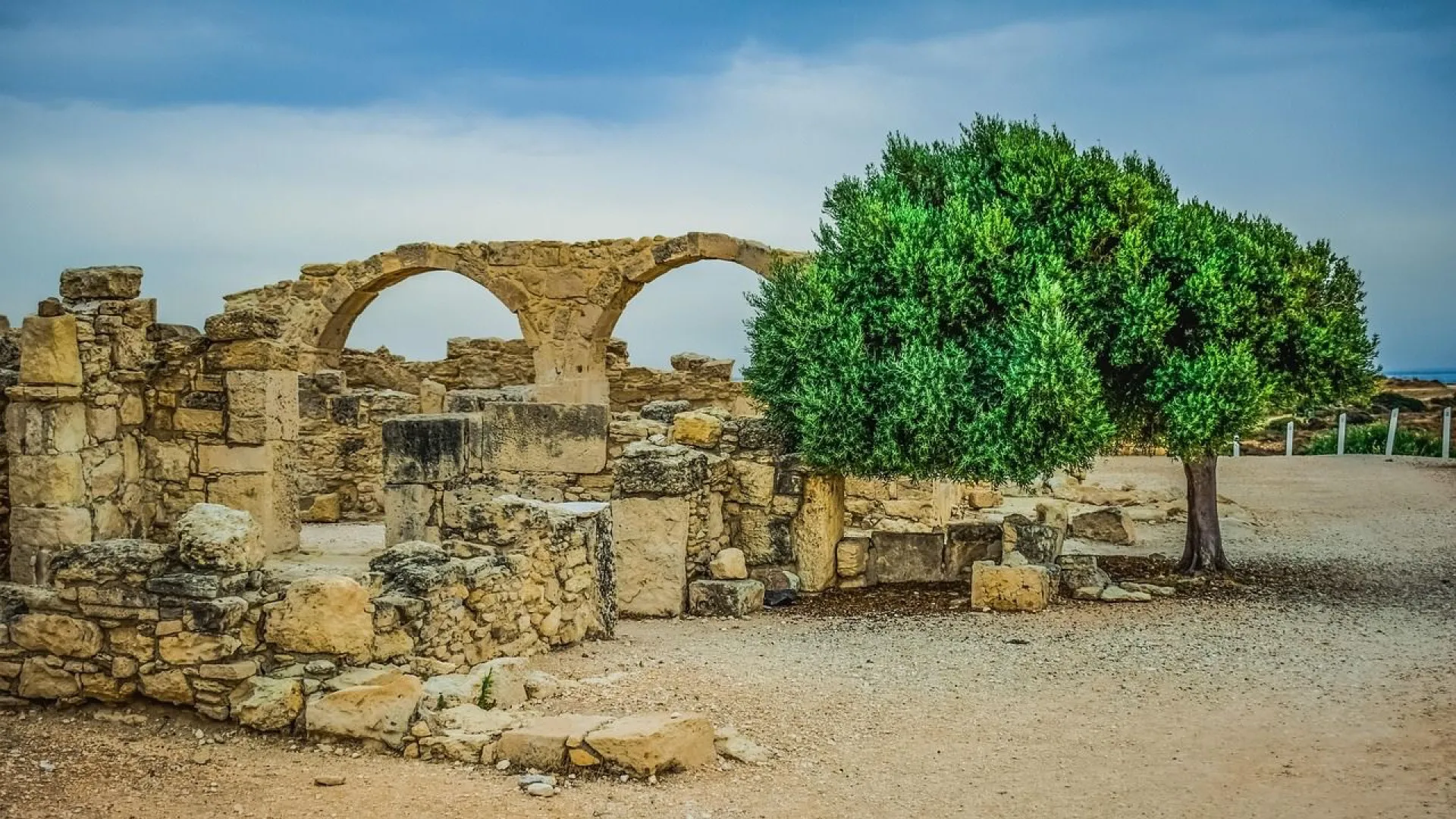




Anyone who chooses to spend an extended period of time in Cyprus quickly realizes that the island is far more than just sunshine, beaches, and Mediterranean charm. The third-largest island in the Mediterranean combines thousands of years of history, a vibrant culture, and breathtaking landscapes. For those staying several months or even years, a whole new perspective opens up: instead of simply ticking off a few beaches or well-known hotspots during a short holiday, you can truly immerse yourself in the diversity of Cyprus, discover hidden gems, and experience everyday life at a slower, deeper pace.
This article will guide you through some of the most fascinating sights and excursions that will enrich your stay. It’s not only about the classic tourist attractions, but also about local secrets, cultural life, and places that can only truly be appreciated when you have the time to stay longer. In the end, one thing becomes clear: living in Cyprus means finding a second home where every day holds the promise of a new adventure.
Few Mediterranean islands have experienced as many cultural influences as Cyprus. Greeks, Romans, Byzantines, Crusaders, Venetians, Ottomans, and the British have all left their mark, turning the island into a living history book. Spending more time here allows you to explore these layers of history at your own pace and dive deeper into its cultural heritage.
The island is dotted with impressive archaeological sites. One of the most remarkable is Kourion near Limassol, a major archaeological treasure. Its grand Roman amphitheater, which once seated up to 3,500 people, is still in use today for concerts and performances. Surrounding the theater are villas adorned with intricate mosaics depicting scenes from Greek mythology, offering a glimpse into the lives of the ancient elite.
On the western side of the island lies Paphos, a UNESCO World Heritage Site. Highlights here include the Tombs of the Kings, monumental underground burial sites from the 3rd century BC that were reserved for high-ranking officials. Equally famous are the Roman villas with their exquisite mosaics, considered among the best-preserved in the entire Mediterranean region.
Another must-see is the ancient city of Salamis, near Famagusta in the north. The sprawling site includes a vast theater, baths, an agora, and colonnaded streets that bring the life of this once-thriving port city vividly back to life. Walking here, you can still sense the grandeur of a metropolis that once served as a vital trade hub between East and West.
Beyond antiquity, the Byzantine era left a strong imprint on the island. The Troodos Mountains are home to numerous small churches and monasteries whose frescoes are among the finest examples of Byzantine art in the Mediterranean. Many of them are UNESCO World Heritage Sites, admired for their brilliant wall paintings. One of the most famous is the Church of Asinou, whose 12th-century frescoes illustrating scenes from the life of Christ remain astonishingly well-preserved.
The Kykkos Monastery, founded in the 11th century, is considered the richest and most prestigious monastery in Cyprus. It is especially revered for its icon of the Virgin Mary, believed to have been painted by the Apostle Luke. With its gold-covered frescoes, ornate icons, and picturesque mountain setting, it is a spiritual and cultural landmark that often draws visitors back more than once.
The medieval period also shaped the island with its castles and fortresses. Kolossi Castle near Limassol, once the headquarters of the Knights Hospitaller, and the fairy-tale-like St. Hilarion Castle in the north, perched high in the mountains, both testify to an era of power struggles and strategic importance. The panoramic views from these heights are not only historically fascinating but also among the most breathtaking on the island.
Cyprus is not just about history – it is a living, modern society where tradition and innovation blend seamlessly. A long-term stay allows you to experience this dynamic mix firsthand. In Nicosia, Europe’s last divided capital, history and modernity collide in striking ways. The narrow alleys of the old town are filled with Ottoman architecture, traditional markets, and artisan workshops, while just a few steps away, modern cafés, street art, and galleries reveal a youthful, creative side of the city.
Limassol, often regarded as the island’s most cosmopolitan city, thrives with international communities, a vibrant start-up scene, and an ever-growing number of cultural events. Festivals, exhibitions, and culinary fairs ensure there’s always something happening. Larnaca and Paphos also strike a unique balance between tradition and modern living, where local festivals, markets, and a lively restaurant scene make everyday life both authentic and engaging.
Cyprus is much more than sun and sea. Spend more time here, and you’ll soon discover a surprising variety of landscapes – from mountains and vineyards to gorges, forests, and untouched coastlines, all inviting endless exploration.
At the island’s heart lies the Troodos range, a paradise for nature lovers. Towering pine and cedar forests crisscrossed by mountain streams provide refreshing escapes during hot summer days. Villages such as Omodos or Kakopetria, with their cobbled streets, stone houses, and wine cellars, offer a taste of authentic Cypriot life.
In summer, well-marked trails lead to waterfalls, monasteries, and scenic viewpoints. One highlight is the Artemis Trail, circling Mount Olympus and rewarding hikers with panoramic views. In winter, the same mountain transforms into a small ski resort – an unexpected delight few visitors associate with Cyprus.
On the island’s western tip lies the Akamas Peninsula, one of Cyprus’s last untouched natural areas. Here you’ll find no large hotels, just rugged landscapes, dramatic coastlines, dense forests, and secluded bays. The Blue Lagoon, with its crystal-clear turquoise waters, is a highlight best reached by boat.
The area is perfect for hiking and Jeep safaris, with trails like the Aphrodite Trail offering breathtaking coastal views and rare plant species. Wildlife lovers will also be rewarded, as sea turtles still nest on these beaches.
Cyprus’s coastline is equally rich in natural beauty. Cape Greco on the island’s eastern edge impresses with dramatic white limestone cliffs, sea caves, and sweeping vistas. It’s a hotspot for divers, snorkelers, and hikers alike.
Further west lies the famous Aphrodite’s Rock, or Petra tou Romiou, where legend has it the goddess Aphrodite was born from the sea foam. The nearby Aphrodite Trail combines myth, nature, and spectacular views, offering a magical experience throughout the year.
With more than 648 kilometers of coastline, Cyprus offers an endless variety of beaches – from long stretches of golden sand to hidden rocky coves. Short-term visitors often seek out “the perfect beach,” but long-term residents have the luxury of exploring different shores day by day, eventually finding their own personal favorites.
On the island’s eastern coast lie some of the Mediterranean’s most famous beaches. Nissi Beach, with its powdery white sand and dazzling turquoise waters, is a lively hub in summer. Families, young travelers, and water sports enthusiasts all flock here, creating a buzzing, holiday-like atmosphere.
Just up the coast, Protaras’s Fig Tree Bay consistently ranks among Europe’s best beaches. Named after a centuries-old fig tree still standing on the shoreline, its calm, crystal-clear waters make it an idyllic spot – especially outside the high season when it takes on an almost magical serenity.
The western coast near Paphos offers a wilder, more rugged charm. Coral Bay, with its golden sand framed by rocky cliffs, is ideal for long afternoons of swimming, sunbathing, and watching fiery sunsets.
Even more pristine is Lara Bay on the Akamas Peninsula, a protected nesting site for endangered loggerhead turtles. During summer, lucky visitors may witness baby turtles making their way to the sea – an unforgettable sight.
In the south, Limassol’s coastline offers plenty of variety. Lady’s Mile Beach is especially popular, stretching for kilometers with shallow waters perfect for families. Some areas are tranquil, while others buzz with beach bars and music, giving it a lively urban vibe. For many residents, a morning swim here becomes part of everyday life.
Beyond the famous beaches, Cyprus is full of hidden coves known mainly to locals. Often unmarked, these spots are perfect for quiet afternoons by the sea. Small fishing boats line the shore, families gather for weekend barbecues, and the water is so clear you can see straight to the seabed.
For long-term residents, discovering and revisiting these secluded spots becomes one of the island’s greatest pleasures. Some even choose to live close by, quite literally with a slice of paradise at their doorstep.
One of the most enriching aspects of life in Cyprus is its food culture. Here, meals are never just about nourishment – they are social events, cultural experiences, and a direct gateway into the Cypriot way of life.
At the heart of Cypriot cuisine lies the Meze – a festive dining tradition consisting of numerous small dishes. Halloumi cheese, grilled fish, kleftiko (slow-roasted lamb), dolmades (stuffed vine leaves), loukaniko (spiced sausage), and souvla (meat roasted on charcoal skewers) are just some of the staples.
Sharing a Meze with friends or family at a long table, often by candlelight and with local wine, quickly reveals why this custom is so beloved. For long-term residents, the joy lies in exploring its countless variations – lighter seafood spreads by the coast, hearty meat feasts in mountain villages.
Cyprus is one of the world’s oldest wine regions, with a history of winemaking dating back more than 5,000 years. Its signature sweet wine, Commandaria, is recognized as the oldest named wine still in production today. Once celebrated by European royalty in the Middle Ages, it remains a point of pride for the island.
Other traditional products also play a central role: olive oil, carob, honey, rosewater, and fresh herbs are staples on every local market. For residents, shopping at these markets is not just about groceries – it’s a cultural experience, a chance to connect with local producers and taste regional specialties firsthand.
While traditional taverns are a cornerstone of Cypriot life, the island’s culinary scene has evolved dramatically. In cities like Limassol and Nicosia, a wave of innovative restaurants offers fusion menus blending local ingredients with global cuisines. Vegan concepts, Asian-Mediterranean fusion, and fine-dining reinterpretations of classics like lamb and halloumi reflect the island’s modern, cosmopolitan side.
For long-term residents, this means you can enjoy both worlds: timeless traditions and a constantly evolving food scene.
Beyond its landscapes, Cyprus’s cities offer a fascinating mix of history, culture, and everyday life – each with its own distinctive charm.
Nicosia is the last divided capital in Europe, making it a uniquely compelling destination. The so-called “Green Line” runs through its old town, separating the Greek-Cypriot south from the Turkish-Cypriot north. Crossing this line is simple at official checkpoints like Ledra Street, and the contrast is striking: in the south, modern cafés, boutiques, and cultural venues thrive, while the north retains an oriental feel with bazaars, mosques, and a slower pace.
But Nicosia is more than politics – it is also the cultural heart of Cyprus. Museums like the Cyprus Museum, housing artifacts from over 9,000 years of history, and the vibrant art galleries of the old town highlight the island’s heritage. Its bustling cafés, taverns, and nightlife give the city an energy that long-term residents come to appreciate deeply.
Limassol has transformed into one of the most modern cities in Cyprus. Its skyline of high-rises and the luxury marina exude international sophistication. A diverse mix of locals, expats, and travelers contribute to its cosmopolitan feel. Cultural events abound – from wine festivals and carnival celebrations to international jazz and art festivals.
At the same time, Limassol retains its traditional Mediterranean charm. The old town, with its narrow streets, historic mansions, and taverns, remains a vibrant reminder of the past. Excellent infrastructure – from international schools and co-working spaces to leisure opportunities like water sports and mountain hikes – makes Limassol especially appealing for long-term stays.
Known as the most laid-back of Cyprus’s major cities, Larnaca is famous for its palm-lined seafront promenade, Finikoudes. The lively yet relaxed atmosphere here makes it a favorite for evening strolls and seaside dining. The nearby salt lake, home to thousands of flamingos in winter, is a natural spectacle not to be missed.
With the international airport close by, excellent healthcare, and a growing expat community, Larnaca offers a high quality of life for those staying longer. It’s a blend of coastal tranquility and practical convenience that makes settling here easy.
Paphos blends myth, history, and modern life effortlessly. Once a major ancient center, it is steeped in mythology as the birthplace of Aphrodite. Today, archaeological treasures like Roman villas with intricate mosaics, the medieval harbor castle, and the Tombs of the Kings are part of everyday life.
Yet Paphos is not only a museum under open skies – it is also a relaxed seaside city. With its small beaches, charming harbor lined with fish restaurants, and easy access to the wild Akamas Peninsula, it’s an ideal place to combine culture and leisure.
Living in Cyprus offers more than famous sights – it opens the door to everyday experiences that bring a real sense of belonging.
Life here moves at a slower, more relaxed pace. Even a morning trip to the bakery becomes an event, with fresh bread, olive rolls, or sweet cinnamon-filled bourekia being staples of the local breakfast. Coffee in a neighborhood café, often enjoyed with friends or neighbors, is another daily ritual. Weekly markets are not only for groceries – they are social gatherings that quickly become part of one’s routine.
A long-term stay also means becoming part of Cyprus’s traditions. The Orthodox Easter is a highlight of the year, with processions, fireworks, and communal feasts bringing entire villages together. Smaller festivals dedicated to local saints or regional products provide more intimate insights into Cypriot culture. Villages like Lefkara, famous for lace-making and silverwork, showcase living traditions that have survived for generations. For newcomers, participating in these events creates an immediate sense of community.
Beyond beaches and cities, Cyprus reveals countless natural wonders. Spring is especially magical, when the island bursts into bloom, transforming hillsides and fields into a sea of color. Small paths lead through olive groves, almond orchards, and pine forests, often ending at hidden chapels or mountain viewpoints. With time on your side, you can revisit these landscapes in different seasons and moods – an experience that makes living in Cyprus truly special.
Cyprus is a rare blend of Mediterranean charm, deep-rooted history, diverse nature, and warm-hearted culture. Living here, rather than simply visiting, reveals a depth that no short holiday could offer.
From ancient sites telling tales of gods and empires, to hikes through forests and gorges, afternoons spent in hidden coves, or shared meals in small taverns – the variety feels endless. Everyday life, shaped by warmth, relaxation, and a strong sense of community, welcomes newcomers with open arms.
For digital nomads, expats, or long-stay travelers, the island offers ideal conditions: solid infrastructure, international connections, relatively moderate costs compared to other Mediterranean destinations, and an atmosphere that inspires while encouraging a slower pace of life.
To embrace Cyprus is to discover not just a place to visit, but a place to belong. Sun, sea, culture, and quality of life combine to make this island one of the Mediterranean’s most rewarding long-term destinations.
We use necessary cookies including analytics to ensure our website works properly and to understand how to improve your experience. By continuing to browse, you accept our use of necessary cookies. Click "Accept All" for personalized content and offers.